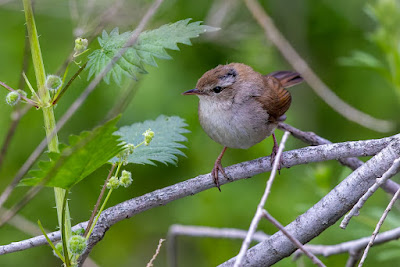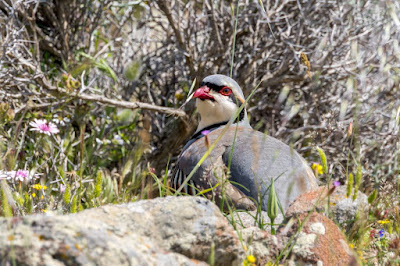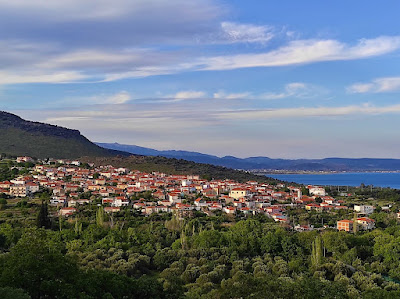LESVOS BIRDING DAY 2 Trip Report: A sunrise bonus birding and the wild-wild West
Lesvos is known worldwide for being one of the best European destinations to watch bird migration. Its strategic location between Europe, Asia and Africa blended with a great variety of habitats, make this Aegean island the perfect destination not only for birders and bird photographers, but for anyone that enjoys wildlife.
Read here about Day 1

An iconic species, Eastern Black-eared Wheatear
at Sigri, western Lesvos

Cinereous Bunting, the emblematic bird
of western Lesvos
This day we decided to take an early wake up and have a brief on-the-site breakfast at Metochi Lake, a small lagoon a couple of km west of Skala Kallonis. This was decided in order to spot some almost nocturnal birds, such as Little Bittern and Little Crake, so our ordinary breakfast could easily wait until 9am. In was an unforgettable experience: hundreds of Red-rumped Swallow, House Martins, Barn Swallows, Sand Martin flying low over the calm waters, while we were listening the melodic songs of Nightingales, Great Reed Warblers, Cetti’s Warblers, Blackbirds, Masked Shrikes, Sombre Tits and Eastern Olivaceous Warblers. We managed to see the Little Crake and a Spotted Crake too, while a few Night Herons flew towards the surrounding hills.
Moving back
to our hotels, we took breakfast and started driving towards the west part of
the island. The whole day would be dedicated to the “wild, wild West” part of
Lesvos, home of some of the rarest species of European birds. Our first stop
was Ispilou Monastery, right after Antissa town. The monastery is sited on the
top of a monolith-like hill, filled with Kermes Oak trees, a truly oasis for
migrant birds that have just arrived from the dry western part of the island.
Whether conditions play a significant part in bird abundance in this specific
habitat. Rainfalls and windy conditions stop the bird’s journey and thus the
area become shelter for hundreds of flycatchers, chats and other passerines. On
the other hand, continuous days of good weather, result in mass departures.
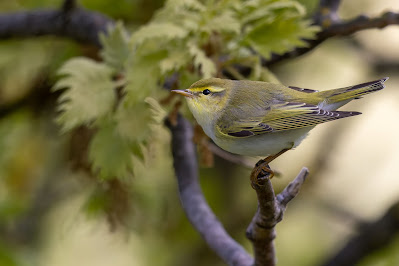
Willow Warbler at Ipsilou Monastery,
a common spring migrant
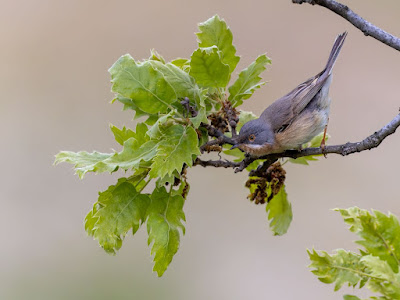
Eastern Subalpine Warbler on oak tree
at Ipsilou Monastery
Therefore,
we were not as lucky this year with Ipsilou Monastery. There has been a great
influx of birds just a few days before our arrival, because of a severe low
pressure system that resulted in thunderstorms. It was followed by 2-3 days of
sunshine, like the day of our visit, so there were very few birds present. A
few Willow Warblers, fortunately some Eastern Orphean and Subalpine Warblers.
The resident species were quite elusive too: Western Rock Nuthatch and Rock
Sparrow gave us only a handful of photographic opportunities.
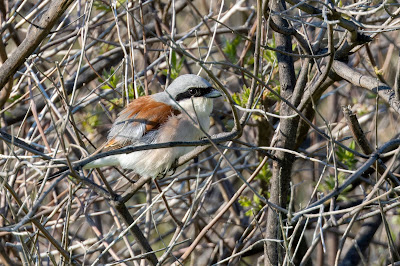
An elusive Red-backed Shrike at Ipsilou Monastery
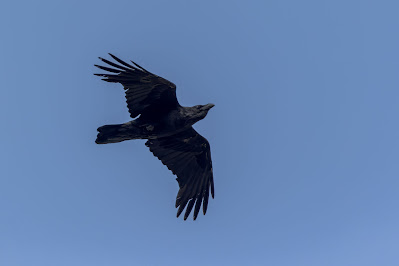
Raven in flight at Ipsilou Monastery.
Birds are nesting on the steap cliff
Since the
area did not seem very productive (birdwatching speaking), we drove down to the
remote fishing village of Sigri for lunch. Remezzo is a family owned restaurant,
and has the best sea view of the area, serving delicious local recipes. A
refreshing local beer could not be denied during such a warm day. The west –
and wildest – part of the island was waiting!
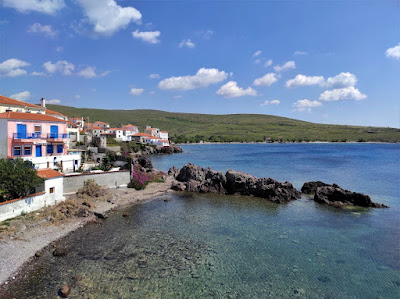
Sigri, a pittoresque fishing village of Lesvos,
as seen from Remezzo Taverna

Jackdaw catching a spider at Faneromeni, Sigri

A huge Glass Lizard (Pseudopus adopus),
basking outside Sigri Sanatorium
We reached
Sigri Sanatorium were we spotted a huge Glass Lizard (Pseupodus apodus). It is
surprising how each year I always encounter this species, in this particular
area of the island, it almost seems like a pre-organized meeting. Around the
old building, he heard the characteristic sound of Chukars, while Long-legged
Buzards, Eleonorae’s Falcons, Lesser
Kestrels and Red-footed Falcons were hunting their preys. A small group of Golden Orioles passed
suddenly a few meters in front of us. The breeding Cinereous Bunting, one of
Lesvos highlight species, was present in many locations on our way. We firstly
saw the species during a short visit in the Petrified Forest, together with
Cretzschmar’s Buntings and Eastern Black-eared Wheatears.
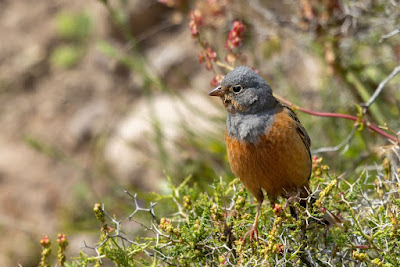
Cretzschmar's Bunting at Meladia Valley, Lesvos

Western Lesvos is the only place in Europe
that Cinereous Bunting is breeding succesfully

Cirl Bunting at Meladia Valley, Sigri
We passed
through Meladia Valley were we saw a few more Eastern Orphean Warblers, the
emblematic Little Owl in its usual spot, small groups of Bee-eaters, Linnets
and pairs of breeding Isabelline Wheatears.
We arrived
back at Skala Kallonis by 8pm. Despite our fatigue, we decided to visit the
Scops Owl site once more and we were rewarded by some bonus sightings of this
secretive owl.
The bird list of our second day Lesvos birdwatching tour:
Ruddy Shelduck
Greater Flamingo
Little Grebe
Collared Dove
Great Spotted Cuckoo
Common Cuckoo
Moorhen
Coot
Wood Sandpiper
Yellow-legged Gull
Great Cormorant
Little Bittern
Little Egret
Short-toed Eagle
Montagu's Harrier
Marsh Harrier
Long-legged Buzzard
Common Buzzard
Scops Owl
Little Owl
Hoopoe
Bee-eater
Lesser Kestrel
Common Kestrel
Red-footed Falcon
Eleonorae's Falcon
Golden Oriole
Red-backed Shrike
Masked Shrike
Woodchat Shrike
Eurasian Jay
Eurasian Jackdaw
Hooded Crow
Common Raven
Blue Tit
Woodlark
Ctesred Lark
Eastern Olivaceous Warbler
Sedge Warbler
Common Reed Warbler
Sand Martin
Barn Swallow
Red-rumped Swallow
House Martin
Willow Warbler
Cetti's Warbler
Eastern Orphean Warbler
Sardinian Warbler
Eastern Subalpine Warbler
Rock Nuthatch
Blackbird
Nightingale
Collared Flycatcher
Whichat
Stonechat
Northern Wheatear
Eastern Black-eared Wheatear
Isabelline Wheatear
House Sparrow
Rock Sparrow
Chaffinch
Linnet
Serin
Black-headed Bunting
Corn Bunting
Cinereous Bunting
Cretzschmar's Bunting
Mammals: Red Fox, Persian Squirrel, Hedgehog (RIP)
Amphibians and Reptiles: Levant Water Frog, Balkan Pond Turtle, Starred Agama, Balkan Green Lizard, Snake-eyed Skink, Glass Lizard
Spyros Skareas
Bird Guide and Certified Tour Leader
Athens, GREECE
All sightings available at my eBird profile


